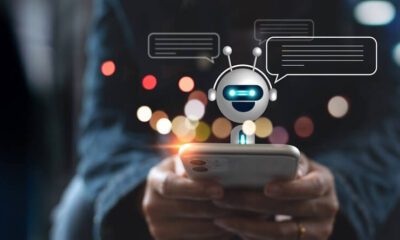
Automation and artificial intelligence (AI) are changing how organizations work while contributing to economic growth by generating productivity gains. In addition, they will help with tackling “moonshot” societal challenges in sectors such as health and climate change.
These technologies will simultaneously reshape the nature of work as well as the idea of the office itself. Machines will be able to perform more of the tasks performed by humans, supplement the work performed by individuals, and possibly carry out certain functions that humans are incapable of. As a consequence, some jobs will suffer while others are expected to grow – and a majority of professions will witness a profound shift.
Understanding the Meaning of Automation in the Workplace
Workplace automation is the implementation of processes or systems that use modern technology (hardware and software) to perform repetitive or predictable operations without requiring human intervention.
And the outcome: Increasing productivity and efficiency by a reduction of manual work processes.
Today, software solutions drive nearly every aspect of office automation. Along with the migration to cloud-based tools and apps, APIs, big data, machine learning, as well as artificial intelligence (AI) have been paving the way for revolutionary advancements in analytics. This propels automation and workflow optimization to an all-new level.
Hardware-based automation is also pervasive in the industrial sector, particularly with the rise of the Internet of Things (IoT). Humans and robots have coexisted on factory floors in the United States for over 50 years, and staff members have spoken out against automation ever since the Industrial Revolution. But for the last 100 years, technological advancements and job creation have gone hand in hand.
Today, however, the trend may reverse, and the effects of automation on the future of work could lead to unemployment in some verticals.
What Will Get Better Due to Automation in the Future of Work?
Let’s start with the good news. Automation will improve the future of work in the following X ways:
1. Work will get more enjoyable, and productivity will increase
People embrace familiarity; they appreciate knowing their job duties and daily schedules. However, when a difficult aspect of the task is eliminated, productivity and performance improve. This is mainly because the role feels easier. In the majority of cases, eradicating the need to repeatedly perform the same task substantially decreases human errors.
2. Industrial workplaces will get safer and, consequently, costs will reduce
A role in a specific field carries with it an inherent risk. Take the construction industry as an instance: you must protect your employees from both immediate and long-term threats, like repetitive strain injuries (RSI) or musculoskeletal disorders (MSD). By implementing workplace safety automation, you can proactively look after those who work for you. This also reduces a company’s exposure to litigation and worker’s compensation-related costs.
3. There will be more time for employees to add real value
There’s nothing more soul-crushing than carrying out banal, repetitive duties every day that demand minimal expertise or effort. Reducing manual labor can free up employees’ time for higher-value tasks. This can spark innovation, giving your company a competitive advantage.
4. Error rates will reduce
When it comes to laborious manual tasks like data entry and billing, automation of tedious workflows can be advantageous for both businesses and employees. Fewer mistakes translate into fewer large-scale errors and, in many instances, enhanced employee satisfaction. In the industrial sector, this can lead to better quality products, fewer recalls, and more profits.
5. Automation can give rise to decentralization and greater flexibility
Work processes may be made more effective and adaptable through the use of machines and algorithms that can automate jobs and make decisions. As a result, more employees will work remotely or in virtual teams, decentralizing the workplace. In addition, automation and AI might make it possible to create on-demand, gig-based job opportunities, which could offer employees greater flexibility or alternative possibilities.
6. Employee efforts will re-center around the customer
By making it possible for quicker and more efficient responses based on fresh data-driven insights, automation can boost customer experiences. Automation also gives staff members the opportunity to zero in on tasks linked to customers by taking certain chores off their to-do lists.
7. Eventually, there will be more (new) jobs)
In the past, technology has been a net employment creator. The need for labor will increase, which will result in more employment being created even as employees are relocated. Jobs are also going to continue to be created as a result of rising wages, increasing costs for healthcare, advancements in technology, as well as further economic expansion. This is one of the main positive effects of automation on the future of work.
The Bad News? Several Areas of Work will be Negatively Impacted by Automation and AI
Despite the clear benefits of automation in the future of work, the following considerations remain:
1. Income inequality among workers may widen
The widespread adoption of AI and automation could give rise to increased economic inequality. The intrinsic worth of human labor might decline if robots and computers take over jobs that were previously performed by people. The difference between the top and lowest earnings is going to widen. As a result, those who are the most adept in using technology and machinery will benefit the most.
2. Worker displacement will be widespread
The possibility of job displacement is among the most significant implications of automation and AI – on how we will work in the future. Several jobs will become obsolete as robots and algorithms improve their ability to carry out activities that used to be carried out by people. This is especially true for professions that need regular or repeated operations, like assembly line work or data input.
However, even occupations that call for a higher level of training and experience, like financial evaluation or legal study, run the risk of becoming automated. This is due to recent advancements in automation and AI, such as large language models.
3. Automation could reduce to focus on honing exceptional talent
Automation can result in disparities in income, employment, and talent as well if the circumstances that foster brilliance no longer exist.
Human potential won’t be realized in the future if robots replace humans – almost entirely – at work. Increasing dependence on technology might make more individuals feel uninspired to study, which might hinder natural intellect from developing and flourishing. Consider the writer’s strike in the US, where the use of AI and automation is a major bone of contention. Without the business conditions to support commercial writing, for example, the mastery of this skill may never be encouraged.
The rise of AI and automation might render human excellence a scarce resource that can only be produced by those with the benefit of the most advanced AI, leaving everyone else behind.
The Bottomline: Automation Will Forever Change the Future of Work
In addition to benefits and challenges, automation compels certain undeniable changes. The attributes that companies value highly are expected to change as bots and algorithms take on an increasing number of responsibilities.
Employees are going to have to be more flexible, imaginative, and capable of interacting with machinery and robots in the future. In order to remain relevant in this evolving work market, they will have to keep learning new things and picking up new abilities. By 2030, around 3% of the global workforce will be forced to change occupational categorizations, McKinsey forecasts.
Along with rising workplace automation, the role of human resources must also transform. In a labor pool that will include both human and AI employees, HR will be in charge of assigning the most qualified personnel to each assignment.
Assess your setup and upkeep expenses, potential ongoing charges or licensing, and other associated expenses as you strive to stay up-to-date with technology – even as the workplace undergoes digital transformation. It is only by keeping in mind the critical considerations for automating in 2023, that companies can come out on the winning side of the future of work and strike the best balance between the pros and cons of automation.



